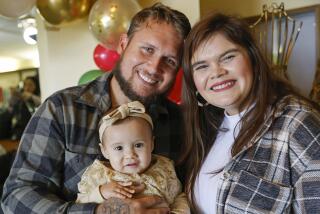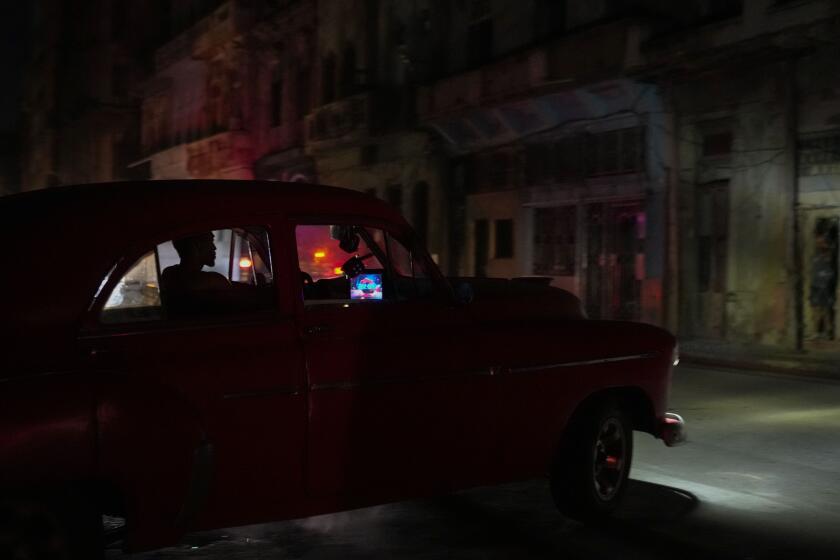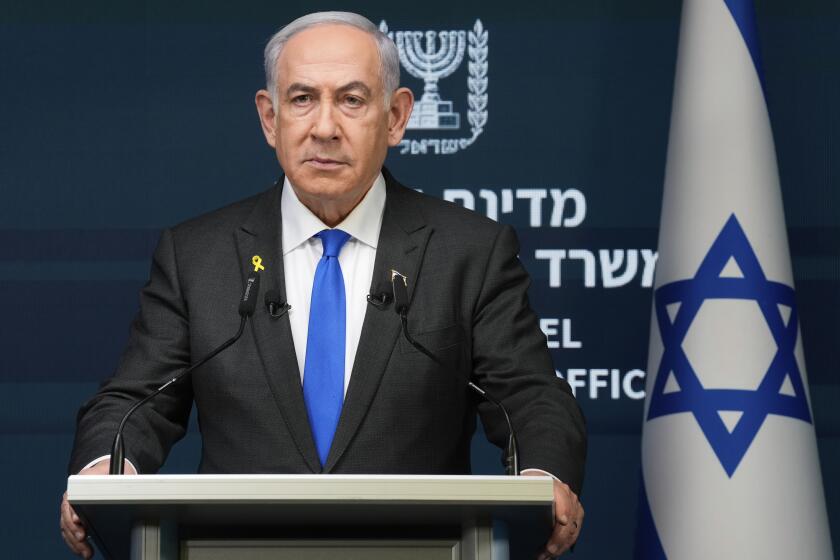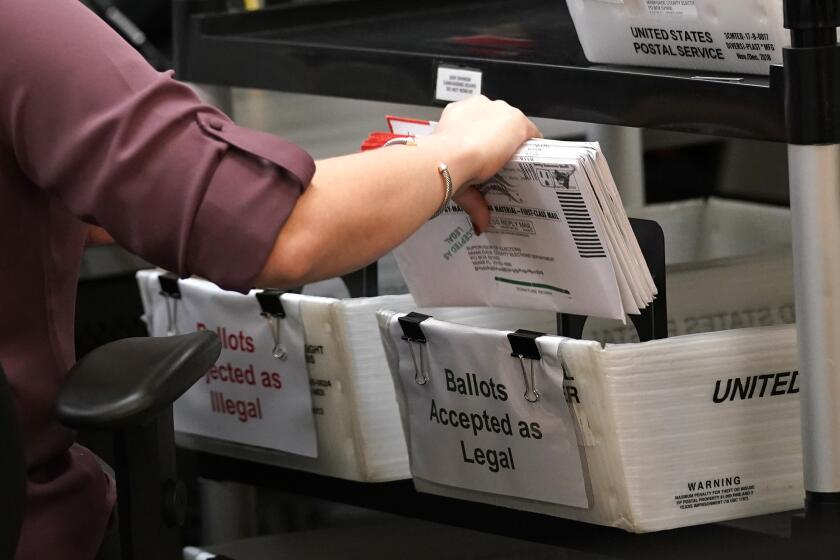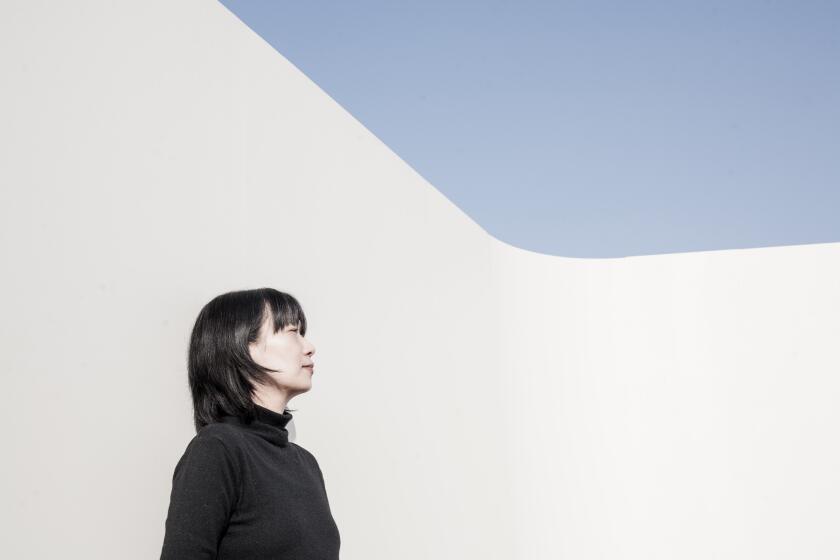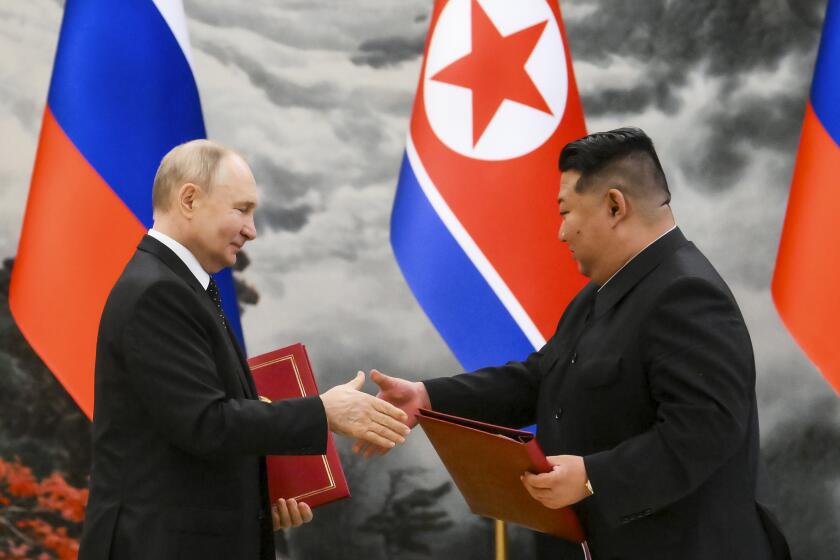A Quest for Unity
He has stirred the Orthodox Church with a vision that is simultaneously bold and progressive yet peaceful and pure. He now preaches fervently to more than 5 million followers, warning them against becoming slaves to materialism and urging a struggle to preserve morality.
Parts of his vision, which includes uniting the many long-separate Orthodox churches, are explosive for many in that world. But Ignatius IV, patriarch of Antioch and all the East, has never been one to hold back.
For the record:
12:00 a.m. Aug. 14, 1999 For the Record
Los Angeles Times Saturday August 14, 1999 Home Edition Metro Part B Page 3 Metro Desk 1 inches; 29 words Type of Material: Correction
Ancient city--A story on the Antiochian Orthodox Christian Church in last week’s religion pages incorrectly stated the location of Antioch. The ancient city is in the Hatay province of southern Turkey.
The spiritual leader of the Antiochian Orthodox Christian Church, Ignatius has been delivering his pastoral message this week to his flock in Southern California as part of his second visit to the United States since 1985. His national tour included speaking at the church’s national convention in Chicago last month, as well as visiting New York, New Jersey and Detroit. Los Angeles is his final stop before he returns to his home at the church’s headquarters in Damascus, Syria.
Thousands Expected to Hear Divine Liturgy
On Sunday morning in a highly anticipated service, His Beatitude is scheduled to preside over the Orthodox patriarchal divine liturgy at St. Nicholas Antiochian Orthodox Christian Cathedral in Los Angeles. In honor of his visit, all 17 Antiochian Orthodox churches in the region will be closed, and more than 500 bishops, priests and deacons, as well as thousands of parishioners, are expected to attend.
It is anticipated that at the service, Ignatius will speak of his dream to unite the numerous Orthodox groups into a single Orthodox Church for all of North America, led by one leader. Ignatius is one of nine patriarchs in Orthodoxy, each heading an autonomous church. Others include the Russian Orthodox, Romanian Orthodox, Armenian Orthodox and Greek Orthodox churches.
“We have to think seriously about communication among all people. We belong to each other spiritually,” Ignatius said in an interview at the church’s chancery in Hancock Park. “Unity does not mean uniformity. We believe in God, and we should believe in his unique will to make each person different. When we think of unity this way, I believe it is possible.”
Dressed in a long, flowing white robe with a bejeweled pendant of St. Ignatius hanging from his neck, Ignatius, at 79, embodies the ancient air of Orthodoxy that holds its believers in awe. His gray hair is brushed back to reveal dark eyes behind tinted glasses. Sitting on a cream-colored sofa at the chancery office, the patriarch exudes spirituality.
His reputation as the outspoken voice for change in Orthodoxy reflects the still-evolving history of the Antiochian Church itself. The church dates back to the time of the apostles, when, according to tradition, Peter established the See of Antioch--or Antakya--in what is now Syria. Scripture refers to Antioch as the place where followers of Jesus were first called Christians. Most of the members of the Antiochian Orthodox Church remain concentrated in Syria, Lebanon, Iraq and Kuwait. Large numbers also reside in Mexico, Chile and Argentina.
Phenomenal Growth in Recent Decades
The North American branch of the church was born in 1895, when Syrian immigrants in New York City established a Syro-Arabian mission of the Russian Orthodox Church. St. Nicholas Cathedral in Brooklyn is considered the mother parish of the Antiochian Orthodox Archdiocese of North America.
Though the Antiochian Church was built in the United States primarily by Syrian and Lebanese immigrants, it has seen phenomenal growth in recent decades as a result of intermarriage and a flood of converts from varied ethnic backgrounds. In 1966 there were only 16 Antiochian Orthodox churches in North America, but today there are 250 throughout the United States and Canada.
Ignatius believes that the converts have strengthened the church’s foundation. The expansion of the church can serve as a blueprint for his vision of universal Orthodoxy, he says.
“It is like passing the cup from one to the other. The church is made by God, and it should therefore be linked in some way,” he said. “We are one body, and we have to take that body very seriously.”
But although there are no issues dividing Orthodoxy in faith, the idea of uniting the separate churches remains controversial, especially in the Greek Orthodox hierarchy. There the leadership has resisted moves toward unity while at the same time it has faced opposition from its own laity.
‘We Are Becoming Slaves to Many Things’
Pope John Paul II has also been working with the Orthodox churches to restore full communion among all Christians by the year 2000. In his 12th encyclical, “Ut Unum Sint” (That They May Be One), he said he had a responsibility to promote unity among all Christians. The church was one until the 11th century, when the Great Schism of 1054 split it into an Eastern branch led from Constantinople and a Western branch headquartered in Rome. Protestant churches broke away in the Reformation.
Unity between Catholics and Orthodox Christians is also a subject of contention among Orthodox leaders, who historically have challenged the pope’s claim to be the supreme earthly authority of the church.
Even so, Ignatius remains optimistic that unity will be achieved. What troubles him most, he says, is what he sees as the moral decay of society.
“Some say we Christians are obsessed with sin,” he says with a smile. “It is because we have eyes and ears. We are only seeing the reality that is around us.
“We have to guard our morality. I see we are becoming slaves to many things. People profiting while others are suffering and starving. What kind of morality do we have?
“We are each individually responsible to do something good in life,” he adds. “If not, we are just arithmetical figures.”
More to Read
Sign up for Essential California
The most important California stories and recommendations in your inbox every morning.
You may occasionally receive promotional content from the Los Angeles Times.


